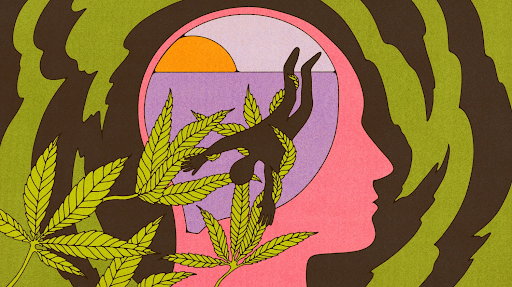When discussing amusement parks, there are typical spaces and places immediately coming to mind. Ferris wheel, crash car, bulls, or a roller coaster. Few of the attractions are as exciting as a roller coaster. Slides are designed to sense the dangers, speed, flight time, and acceleration. In any case, it is safe for anyone who decides to take risks and enjoy them. A true symbol and symbol in many places, roller coasters have nurtured a growing flame and popularity for over a century. You have the choice to take the fastest roller coaster in the world.
What is a roller coaster?
The roller coaster is a type of attraction comprised of rails that form one or more paths that go up and down in a specially designed circle. Trains run along these rails, consist of carriages, and passengers are easily connected and transported. Trains typically use motorized chains or cables to climb uphill and under the influence of gravity down the slopes, entertain passengers and provide scary acceleration.
This was used by railroad companies to provide weekend entertainment with few passengers. In a sense, the Americans invented the concept that we are currently associating with the roller coaster. Little by little, roller coasters began to spread all over the world.
The trains run along these rails. They consist of carriages, and the passengers move. They are attractions that have evolved to provide more and more fun with extreme safety precautions.
Roller coaster operation
Slides work by taking advantage of the acceleration caused by gravity. In other words, gravity is involved in all movements. Therefore, the first roller coaster ride is downhill. This landing creates the momentum that the carriage must constantly move. Normally, slides have several stages.
- Gravity. The acceleration from the first landing is important for the rest of the way.
- Stored energy. At the highest point on the roller coaster, the trains store potential energy. It is converted into kinetic energy by gravity during the fall. It’s pure physics! Some of this energy is lost as heat due to friction with rods and air, reducing the speed and maximum height the car can reach.
- Motion control. High-speed corners must be tilted inward to prevent the vehicle from being accidentally released. To avoid collisions, you can use the external brake to stop the vehicle in strategic places.
- Primary device. To take the cars to the top of the roller coaster, a roller coaster is used in the middle of the rail. A hook is attached to the chain at the bottom of the cart.
- Action force. At the turn, the passenger turns around and needs centripetal force and gravity to prevent the carriage from falling. The first is to pull the cart toward the centre. So you do not fall!
- Correct calculation. The bend height is always proportional to the slope at which the vehicle moves. Without the correct calculations, the car may not be long enough. But here everything is under control!
- The last stop. When the train reaches the journey’s end, a sensor detects it and activates the braking system.
Well, this is the basic process of a roller coaster, but you can see that many details need to be considered for them to do their job. They pay close attention to the safety of their visitors. Therefore, the roller coaster has all the quality certificates, has passed the corresponding technical checks and has the most powerful safety system so you can enjoy the best.
The famous roller coaster
Among them are “El Cyclone”, which first reached 100 meters in height in 1925, and “El Tren de la Mina”, which includes an underwater passage in 1966. In the century, the roller coaster did not stop growing and improving. Tubular steel rails were introduced in the 1950s. Nylon or polyurethane wheels cover the pipe’s top, bottom and sides to secure the train to the track as it passes through intricate loops and corners. And at the end of the century (1992), the first inverted road was built.
Types of the roller coaster
Currently, there are dozens of slides, among which are:
- made of steel
- Water
- hybrid
- invest
- turn around
- Stop
- four dimensions
- There is no floor
These are just a few of the roller coaster rides available at parks and fairs around the world. This created a new classification for designs and types of railways and trains and height. For several years, Formula Rossa has relied on high-risk designs that violate all the laws of physics and give users an exciting experience. Now, with the development of a roller coaster, you can take part in a real show of adrenaline and passion.
Scream at every thrust and raise your arms to enjoy the ride quality” is one of the many sayings that take advantage of the ups and downs that characterize the charm of this fair. In their entertainment centre, all the excitement is waiting for you!
Roller coasters are one of the characteristic attractions of many amusement parks, which already date back a long tradition. Still, despite having more than a hundred years since their creation, they constantly offer new sensations, adrenaline, and dopamine discharges.
The sharp curves, ascents, descents and the strong speed of roller coasters can provoke strong emotions, but more than one person ends up with vertigo, dizziness and even fear. The anxiety generated by this mechanical game is known as veloxrotaphobia .
Beyond being the roller coaster a fun attraction, which relieves you of stress because it is very dizzying, its continuous use or certain ailments can have some effects on health in general, although nothing serious. In fact, according to various safety studies, a plane crash is more likely than one in the attraction.
The forces generated by a roller coaster can prevent blood from reaching the brain and can cause fainting, but this force generally lasts no more than three seconds. There are also no long-term risks associated with frequent practice, and most experts agree that the biggest concern would be temporary muscle tightness and headache or neck pain.





